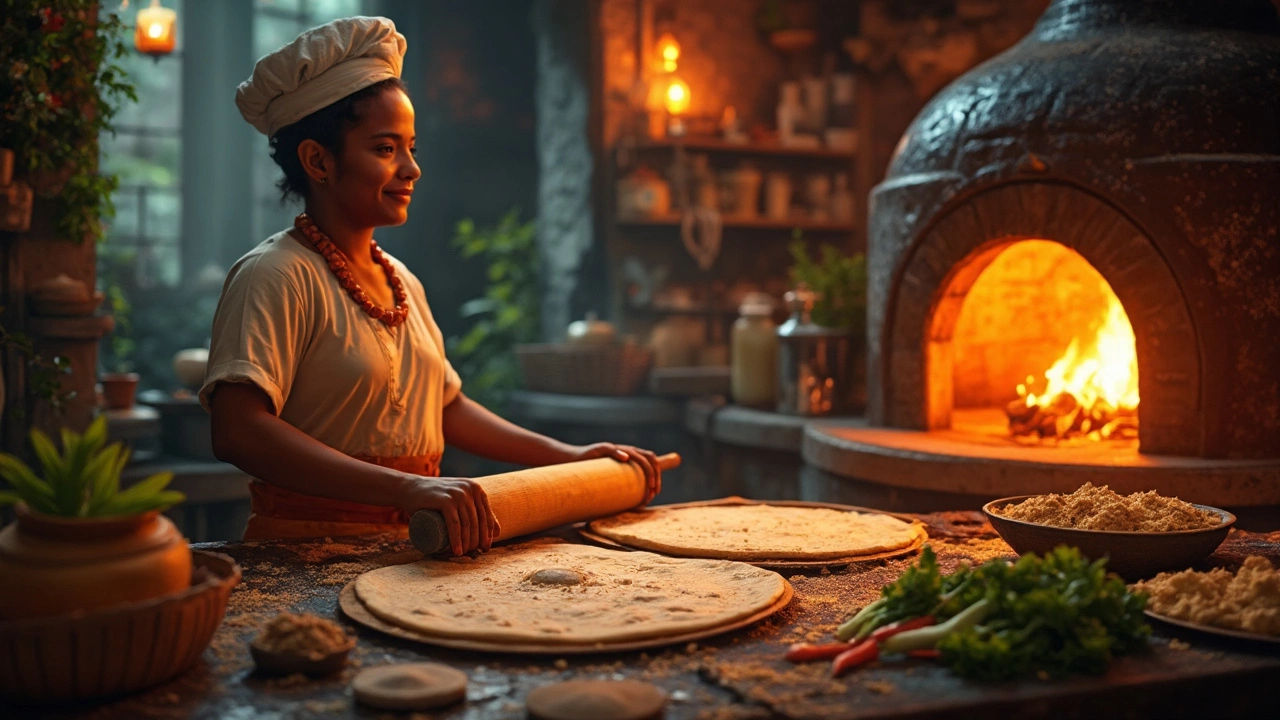Paratha vs Roti: Which Indian Flatbread Wins?
When working with Paratha vs Roti, the age‑old debate over two staple Indian breads. Also known as flatbread showdown, it highlights how subtle changes in dough and heat create very different results. The comparison pits Roti, a thin, unleavened whole‑wheat flatbread cooked on a dry skillet against Paratha, a layered, oil‑rich bread where the dough is folded, greased, and pan‑fried. Both rely on whole wheat flour, the classic protein‑rich grain used in Indian households and a hot tawa, a flat skillet that delivers even heat to finish the cooking.
Key Factors to Compare
The first noticeable difference is texture. paratha vs roti isn’t just a name swap; it’s a matter of layering versus stretching. Roti stays soft and pliable when you roll a single, well‑hydrated dough ball and cook it quickly. Paratha, on the other hand, gets its flakiness from repeated folding with oil or ghee, creating distinct layers that puff up on the tawa. This layering technique also demands a slightly higher fat content in the dough, which changes the flavor profile and calorie count.
Cooking method adds another layer of contrast. Roti thrives on a dry, high‑heat surface; any moisture on the tawa can prevent puffing and leave the bread tough. That’s why tips like “dry the tawa before each roti” appear in many kitchens. Paratha tolerates a bit of oil in the pan, and the heat is usually moderated to allow the layers to crisp without burning. The right heat level is a balancing act: too hot, and the outer layer chars before the interior cooks; too low, and the layers stay soggy.
Common problems often stem from dough handling. A roti that won’t puff usually suffers from under‑hydrated dough, insufficient kneading, or a rolling pin that’s too thick. Adding a pinch of baking soda or baking powder, as some cooks suggest, can introduce tiny air bubbles, but the real fix is a softer dough and a hot tawa. Paratha issues—like break‑age or uneven layers—generally arise from over‑working the dough during folding or not letting the rested dough relax before rolling. The secret is a gentle touch: roll just enough to seal the edges, then let the pieces rest for a few minutes.
Tools and timing also play a role. Using a cast‑iron tawa retains heat longer, which benefits both breads, but you must adjust the cooking time accordingly. Adding a splash of oil to the roti dough can make the bread softer, yet traditional recipes keep it oil‑free for authenticity. For paratha, a small amount of oil on the surface of the dough before each fold is essential to achieve that flaky mouthfeel. Additionally, letting the dough rest—at least 20 minutes for roti and 30 minutes for paratha—allows gluten to relax, resulting in a more tender bite.
Below you’ll find a curated set of articles that dive deeper into each of these points: why roti sometimes refuses to puff, the role of baking soda and powder, the perfect moment to add oil into the dough, and the science behind layering paratha. These guides give you practical, step‑by‑step advice so you can master both breads in your own kitchen.

Calories in Roti vs. Paratha: What's the Difference?
Unlock the secrets behind roti and paratha calories, clarifying which is better for your diet. Discover step-by-step guides on managing calorie intake with these popular Indian staples, including tips on enjoying them without guilt. Compare the calorie content of different versions and learn how to incorporate them wisely into a healthy lifestyle. This guide demystifies calorie counts, helping you make informed dietary decisions.